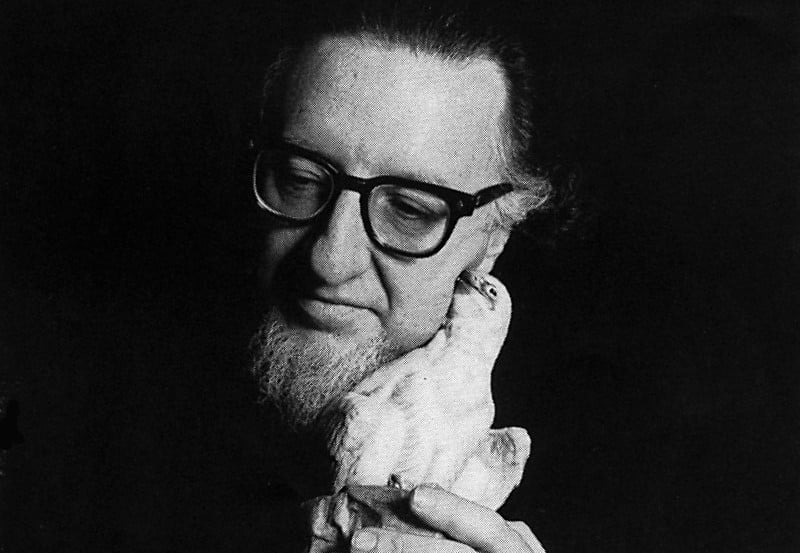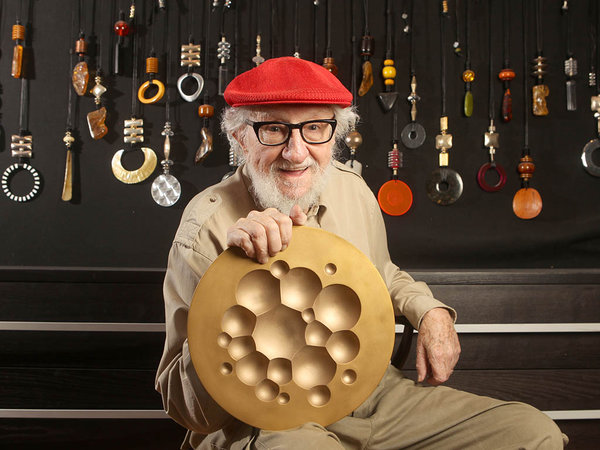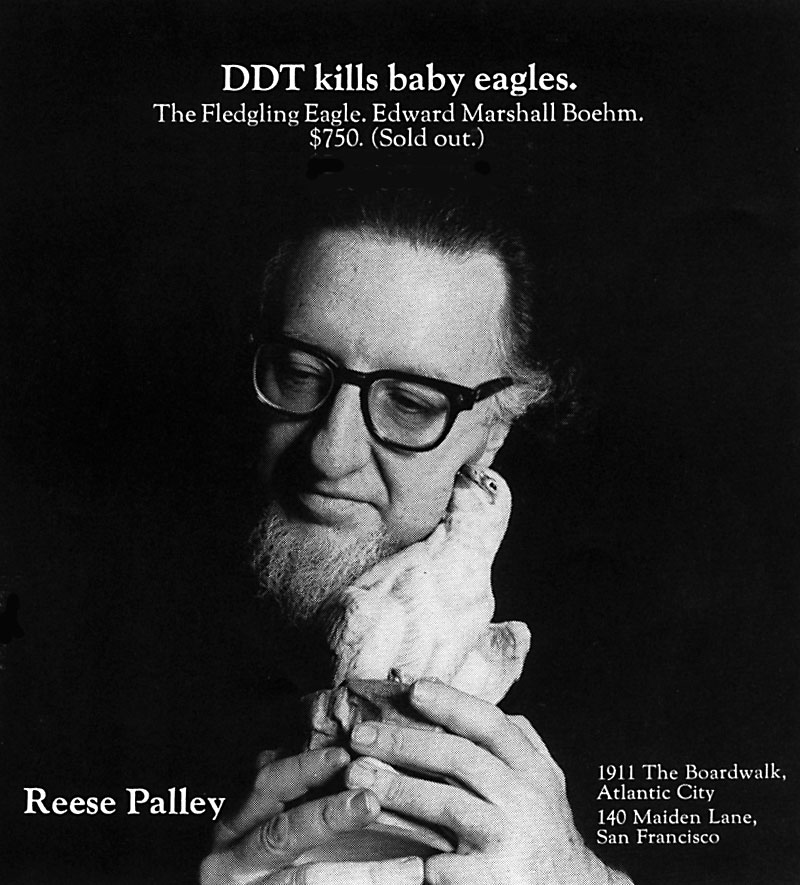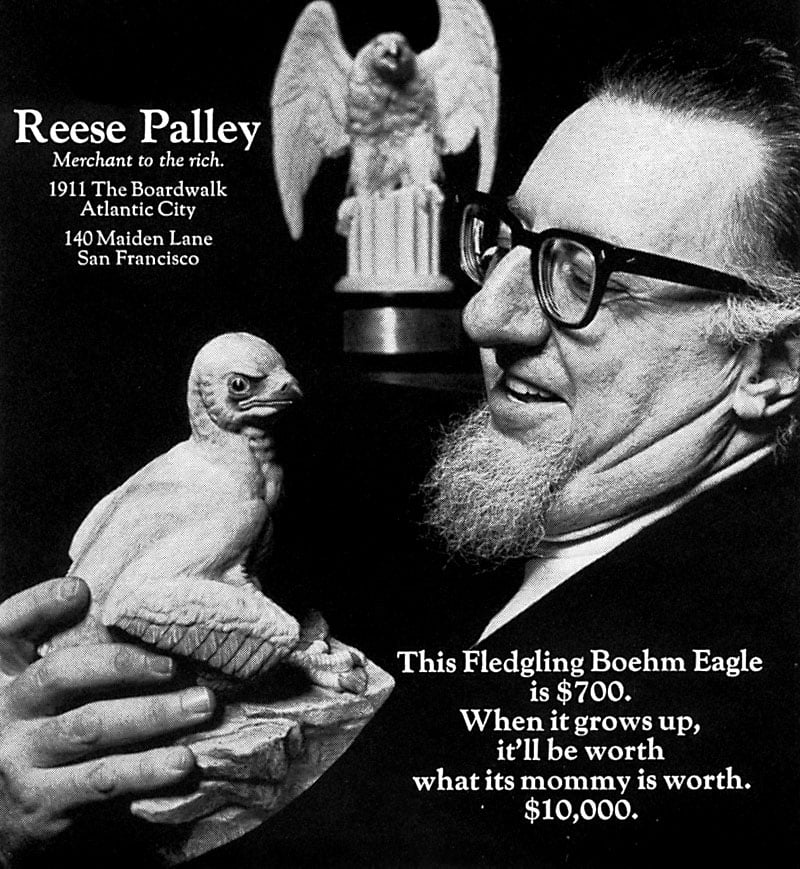Galleries
Reese Palley, Adventurer and Pioneering Soho Gallerist, Has Died at 93


Sarah Cascone


Reese Palley holding his favorite object, a limited-edition Tapio Wirkkala plate, in front of a wall of totems designed by his wife, Marilyn.
Photo: Charles Fox, courtesy the Philadelphia Inquirer.
Art dealer and adventurer Reese Palley, who opened one of Soho’s first art galleries and figured prominently in his own ads, died Wednesday. The 93-year-old passed away in his sleep at his Fairmont, Philadelphia home.
A native of Atlantic City, Palley opened his first gallery there in the late 1950s. He kept a pet goldfish and white cockatiel named Cocky, and represented, among other artists, sculptor Edward Marshall Boehm, known for his porcelain figures of birds and other wildlife. In his 1976 book The Porcelain Art of Edward Marshall Boehm, Palley described the artist as the Louis Comfort Tiffany of porcelain.

A Reese Palley ad.
Photo: courtesy Reese Palley.
On his website, Palley, who wore his beard long and often donned a red beret, includes a 50-item list of “some stuff that happened to me here and there.”
Number 32 reads: “I opened and operated the largest art gallery in Soho, thus hastening the development of that area as a vibrant art center. The least artistically important artists that I represented were John Lennon and Yoko Ono.”
In his book True Colors: The Real Life of the Art World, critic Anthony Haden-Guest lists Palley as the second gallerist to set up shop in Soho, following Paula Cooper, who opened her eponymous gallery in 1968. (See 62 Women Share Their Secrets to Art World Success: Part One.)

Raphael, Portrait of Lorenzo de Medici.
Photo: courtesy Christie’s.
Perhaps the most intriguing item on Palley’s list is number three, in which he bought an unidentified Raphael painting in Paris for $3,000 in the early 1960s. As the dealer recounts on his website, he sold it to a “crazy guy” for $9,000. That man’s widow unloaded it for a mere $368, before it passed into the hands of dealer Ira Spanierman, who had it thoroughly restored and identified it as authentic.
The portrait, of Lorenzo de Medici, sold at Christie’s London in 2007 for £18,500,000 ($37,277,500).
“My reward, and it was more than enough,” Palley said, “was that I had gifted to the world a great painting and a great moment in the history of art which would otherwise have been lost again in the mistiness of time.”
Palley became a millionaire thanks to success as an art dealer and real estate magnate, before selling his worldly goods in 1979. He chartered two 747 planes to send his 750 “closest” friends to Paris for his 50th birthday before embarking on a two decade–long circumnavigation of the globe upon his 46-foot-long sailboat, named Unlikely.

A Reese Palley ad.
Photo: courtesy Reese Palley.
His adventures at sea, recounted in his book Unlikely Passages, allegedly included starting a mushroom farm, becoming the first private vessel to enter China (in 1982), starting an airline company in the Maldives, smuggling a sought-after Torah out of Odessa on behalf of an impoverished rabbi, and escaping five Ethiopian gunboats on the Red Sea.
“It’s not that I’m so exciting,” Palley told the Philadelphia Inquirer upon his return. ”It’s just that everybody else is so dull.”
Palley is survived by three children and his third wife, Marilyn Arnold Palley, an artist. “Always the adventurer and iconoclast,” she told the Inquirer of her late husband, “Reese believed every moment of life is an event.”